|
We are very pleased to present the results of our 2023 Wellbeing Study, which was undertaken in April 2023 with 442 responses. Thank you so much if you found time to provide your input. This is our 5th study on this topic since 2018 and you can read all the results of previous studies here (scroll down through our archives). We asked you a number of questions to gauge how important Arts & Crafts are to your overall sense of wellbeing. As per our findings in previous years, there is an overwhelming sense of support that being involved in Arts & Crafts helps not only with wellbeing, but also with our sense of purpose, social connectedness, concentration levels, and our good health and activity levels. The majority, (96.8%), of respondents are aged 45+, and over 94% are women. Survey results: How important is doing Arts & Crafts to.... The average rating for sense of wellbeing was 8.8 out of 10. The majority, 49%, rated this at 10, 'Doing Arts & Crafts is essential to my wellbeing'. The average rating for sense of purpose was 8.1 out of 10. The majority, 36%, rated this as 10, 'Doing Arts & Crafts is essential to my sense of purpose'. The average score for social connectedness was 7 out of 10. The majority, 20%, rated this as 10, 'Doing Arts & Crafts is essential to my sense of social connectedness'. The average score for concentration levels was 7.8 out of 10. The majority, 28%, rated this as 'Doing Arts & Crafts is essential to maintaining my concentration levels'. The average score was 7.8 out of 10. The majority, 29%, rated this as 10, 'Doing Arts & Crafts is essential to maintaining my good health and activity levels'. On average, each participant engages in 3.46 Arts & Crafts types, with the top five favourites being:
Learning preferences continue to changeLearning preferences continue to change too. Our survey results showed that 87% of participants engage with in person (onsite) learning, and now 66% engage with online learning. These numbers add up to more than 100% because many people engage in both kinds of learning Arts & Crafts, but it shows a strong increase in online learning since our 2022 study when only 25% reported that they engaged in online learning. The main reasons given for this increase include:
We hope you find these results interesting and continue to enjoy the overall wellbeing benefits of Arts & Crafts learning with us at Ardington!
0 Comments
In our latest wellbeing study, we asked our students to give us their views on this important topic; we send a big thank you to all of you who took time to respond. The study is our third in the series since we took over Ardington School of Crafts at the end of 2016, and showed that over 9 out of 10 (97.5%) believe Arts & Crafts improve their mental health and wellbeing. 8 out of 10 feel an enhanced sense of purpose and over 7 out of 10 (72.5%) feel their concentration levels are improved. Participants also reported improved social connectedness, activity levels, physical health and communication ability. We were also keen to understand what were people’s favourite subjects. As in previous studies, textiles and needlework, painting and drawing, calligraphy and printing came out high on the list, followed by mixed media, papercrafts, jewellery making, clay and ceramics and glasswork. We also asked about people’s experiences and preferences of doing online or onsite classes and workshops. Interestingly, more than half enjoy online learning as much or more than onsite, mainly because of the convenience to fit it in around their lifestyles. You can read all the individual comments below – they speak for themselves.
Our students cite the positive benefits of doing arts and crafts activities “Getting 'lost' in the activity - improves concentration, removes one from the pressures/horrors/etc of real life. In some cases, striking up a friendship with a like-minded person. Having been told at school I wasn't any good at art finding out that I am actually not half bad - great confidence boost. During lockdown I was even more aware of the benefits of living in the countryside as walking everyday I would look for little items a leaf a plant the colour of the sky, to inspire me as subject matter to put into a textile piece or a collage. I started to draw more and gained confidence in doing so. It gave me a sense of purpose and of joy, especially when I was pleased with the outcome. Gives a feeling of achievement and makes you feel more positive The satisfaction of learning a new skill or improving one is such a positive boost in one's self esteem and outlook. I believe that thinking about art, physically painting, drawing, on line lessons have kept me sane. Have managed a few live lessons, but during Covid art was my lifeline. On line lessons have been brilliant. As a carer I have limited time to undertake my passion for painting and embroidery so these online courses with the recording option is excellent for me and means I can pick up on a course whenever I have the time. Its been a godsend during a very stressful period. A reason to get up in the morning Joining the local quilting group, and since then becoming the chair and helping to organise talks and exhibitions has really helped me connect with my local community and has given me purpose and pleasure. Only the items I have made, some of which I have given to others. I work long hours and it gives me a time to be completely immersed in something completely different. I improved my skills level in calligraphy - having more uninterrupted sessions with more time to reflect on and finish pieces of work Being occupied, excited, trying new activities, sometime successful sometime not, socialising, listening and talking and being spoken to during the class. This is where Gemma is such an ambassador to Ardington. Helps with mindfulness Connecting with other, like-minded people. Something in the diary to look forward to. My most interesting friends are also "designer/makers" I have clinical depression, without crafts I could not function I make presents for people for Christmas and birthdays which gives me a sense of pride. I use crafting to keep my hands busy which helps me not to graze on chocolate and crisps in the evening. Also I can't worry when my hands are occupied. Helping release stress from my busy day job. The concentrated effort of Lino cutting or hand stitching is both mindful and calming Joyful moments Lifting spirits doing something creative occupying your mind with that purpose meeting new people all particularly relevant during last couple of years I’m a calligrapher and a friend is a watercolour artist, we were the busiest we’ve ever been in lockdown and didn’t want it to end. Whilst other people were so lonely and miserable, we only got a sense of it through programmes like Staged and Grayson Perry. To me, it's mindfulness. In the moment rather than dwelling on external events. Relaxation and mindfulness. Eliminates boredom The positive benefits have included feeling mentally better, with improved quality of life and tangible end products that I am proud of Its very calming to sit and stitch or to practice lettering Making and sharing Once I had set myself some craft goals as a reward for completing fuller, necessary tasks, I lost my listless lockdown syndrome Plenty to think about in the dark winter days Its being able to 'lose yourself in the craft, not thinking about anything else but that. Wanting to do and learn more” Thank you once again to all those who contributed to the research. We hope you enjoy the benefits of doing Arts & Crafts for many years to come! You can see the full results here. For the third year running, our Wellbeing Study shows the beneficial effects of being involved in arts and crafts. The majority of respondents were women again, but we are gradually increasing the number of men who participate in workshops at the school. The word is getting out that it's cool! The key results show a continued high rating for the 'feel good' factors of being creative:
Once again, many respondents submitted personal comments to evidence their scores in the above section, and we have included a number of these quotes below (anonymous).
You can access the full results of the survey at the link below, and we thank you if you were one of the participants. Here's to another year of creative calm and wellbeing! We are delighted to present the results of our latest Wellbeing Study. Arts & Crafts are as good for your wellbeing as ever! Following the success of, and interest in, last year’s Wellbeing Study, we are delighted to share the results of the 2019 survey with you. Once again, the evidence supporting Arts & Crafts activities as a means to improve mental and physical health and wellbeing is overwhelming. Not only that, participants told us again that they feel a strong sense of purpose, have higher concentration levels and improved social connectedness through being engaged in Arts & Crafts activities. This year’s results reinforce the strong messages on all of the points that came through in 2018. You can compare the full results of both surveys below. Interestingly, around 40% of participants also told us that they are enjoying a continued source of income through these activities, similar to the result last year of 42%. This is a particularly important aspect, and supports broader results across the UK which confirm that more and more people are making an extra income from a ‘side-line’. How nice to have an enjoyable way to earn extra money too!
Traditional or Contemporary Crafts This year, we added a new question to the study to explore whether you preferred traditional or contemporary Arts & Crafts. Almost 77% of you believe there is a place for both, and are engaged in a whole range of new techniques and methods, such as modern quilting, mono-print, mixed media, polymer clay, precious metal clays, computer aided design, up-cycling, iPad art, and microwave dyeing to name but a few contemporary approaches. Welcome to the results of the Ardington School of Crafts Wellbeing Study 2018 (as featured in Craft & Design Magazine March 2018) We had over one hundred responses to the study from people aged 25 to over 75. The largest group of study respondents was aged between 55 and 64. Strikingly, there were very few men – just four out of a hundred were male. Why was this? The invitation to take the study was sent to a wide variety of people and aimed to achieve a good spread of age and gender. On social media, it reached an audience that was made up of 37 percent men. Perhaps one reason that we had such a small number of men respond is that not enough men yet realise how important it is to be creative and that, as we will see from the results, creativity has such a strong beneficial impact on health and mental wellbeing-being, evidenced by our respondents in a long list of positive outcomes. The student base here at Ardington School also reflects a much smaller percentage of men than women attending courses. Our view is that more people, (especially more men!), should take up a creative activity in order that they can benefit from better health and wellbeing, feel less anxiety but a stronger sense of purpose and achievement. The study results show conclusively that people feel much happier, have a stronger sense of purpose and are more relaxed because they are involved in arts and crafts activities. Most interestingly, almost half of the people in the study are now making an income from their crafts. This is becoming more important as we live longer, and need to finance that additional lifespan. Why not earn money by doing something you love and makes you happy? You can see the full results of the study here, and read the commentary on the findings below. What types of art and creativity do people enjoy? The study results showed that most people enjoy more than one art or craft activity, on average almost 3.5 each. The top activities in our study included textiles and needlework (69%), painting, drawing and illustration (37%), and mixed media work (28%). Also, very popular were calligraphy (23%), ceramics, clay and mosaics (23%) as well as paper crafts (25%). Jewellery making and metalwork also scored highly (22%), as did photography (22%) and printmaking (21%). Garden design and glasswork were favoured by around 15% of respondents, and finally willow-work (12%), writing (10%), floral art (8%), stonework and woodwork (4%) and furniture (3%). There may be some gender related preferences in these results, as a deeper review of the individual answers for men shows a preference for painting and printmaking in this group, albeit a small sample. What types of arts and crafts do people do? |
Blog categories
All
Author:
|
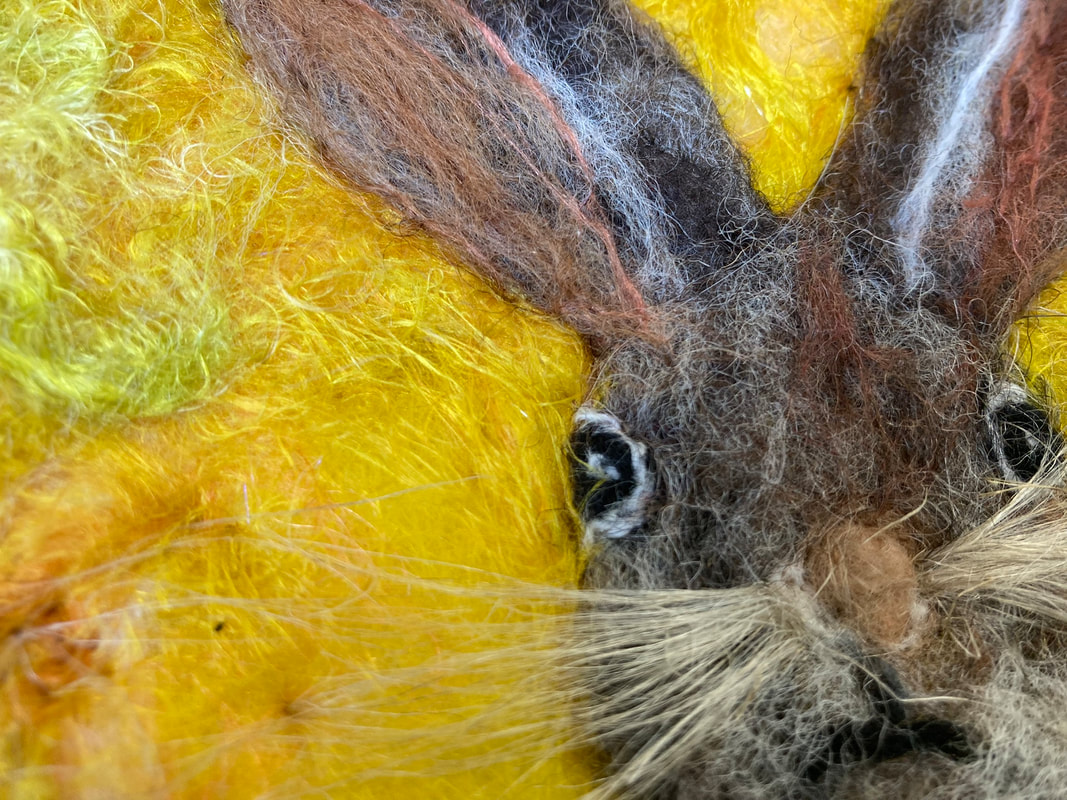
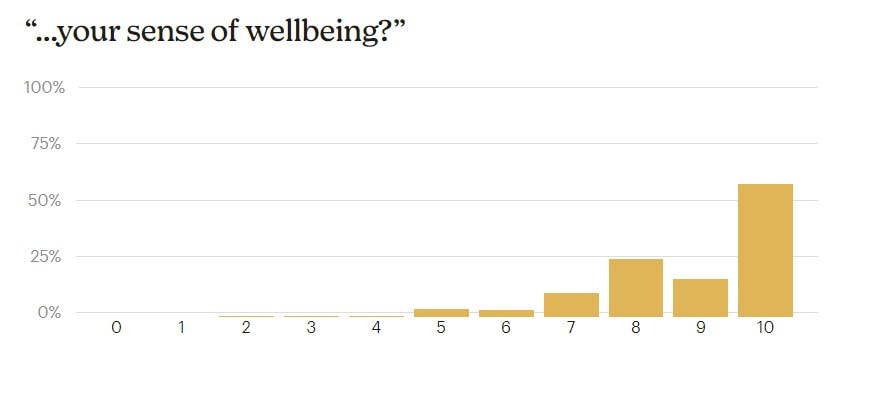
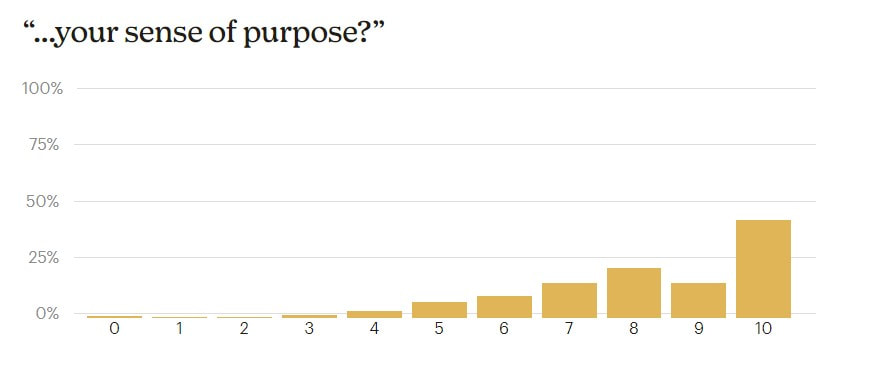
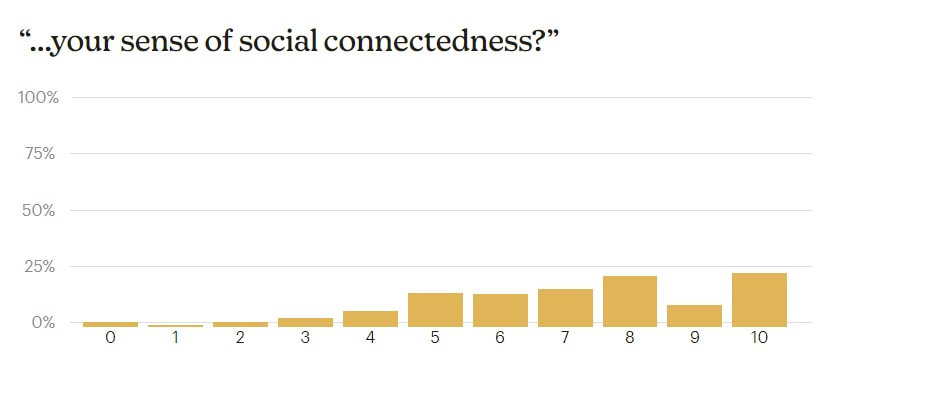
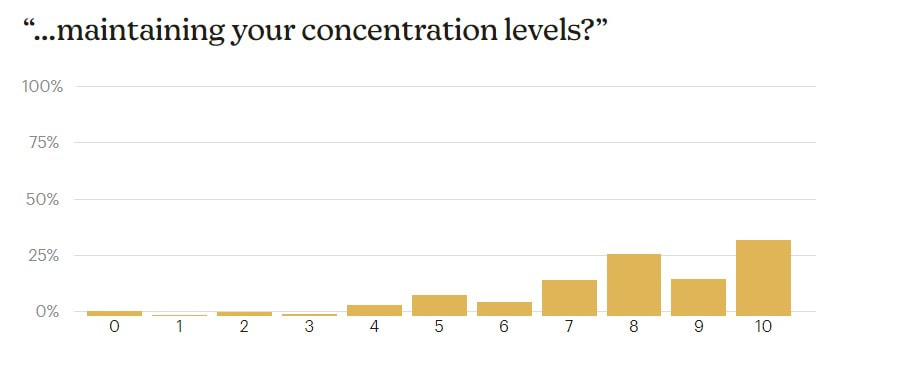
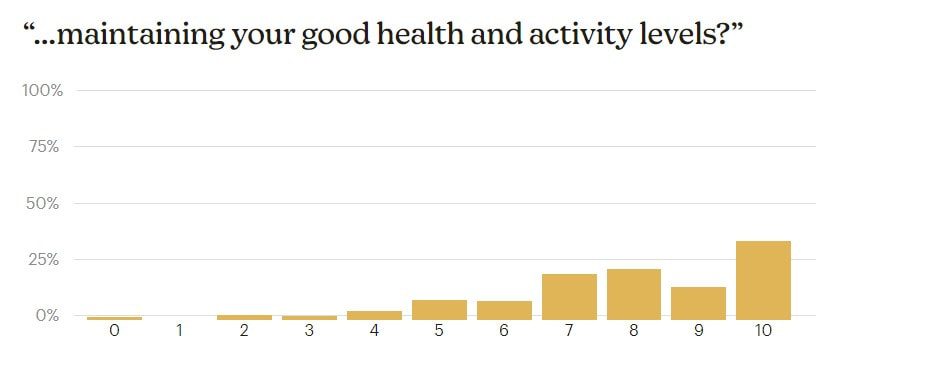
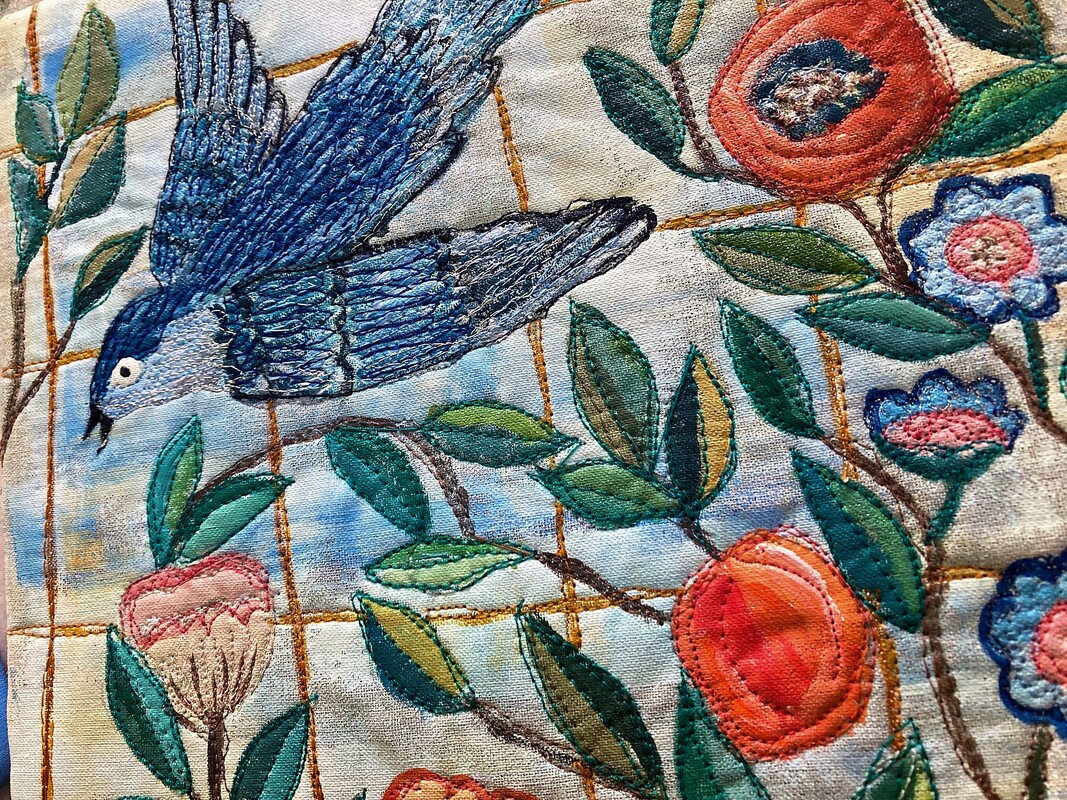
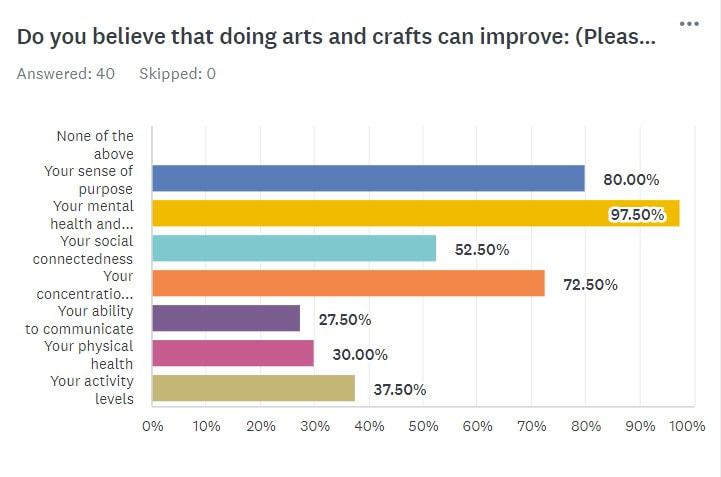
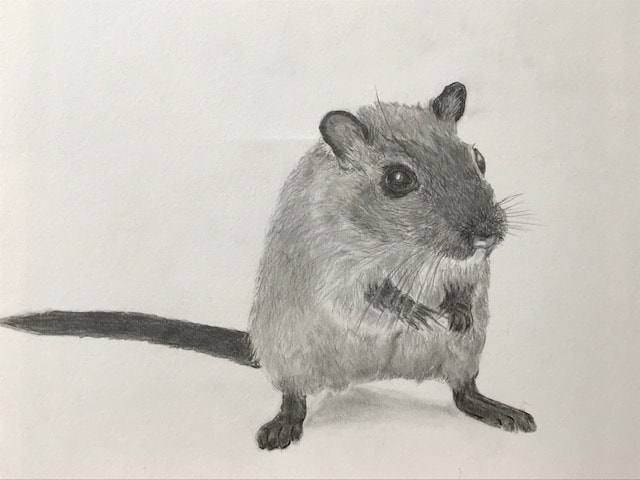
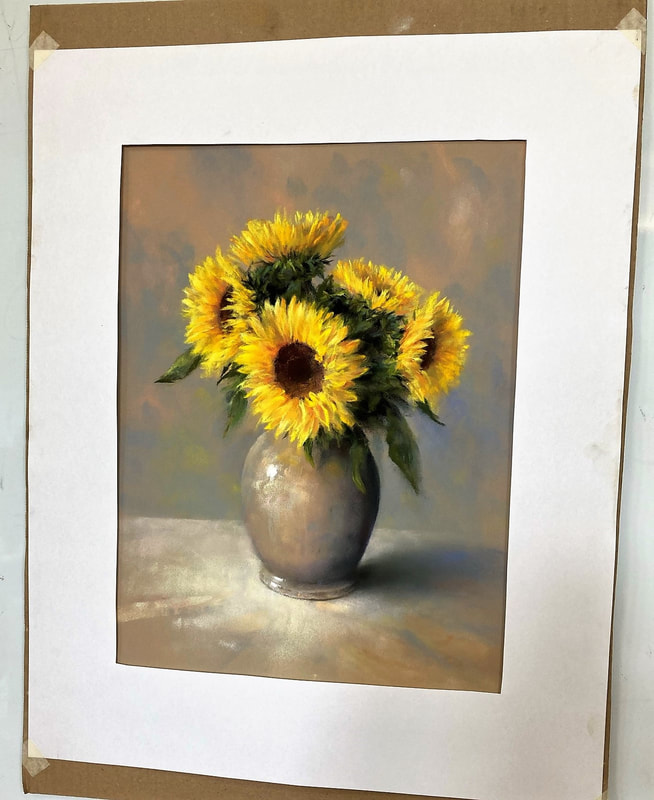
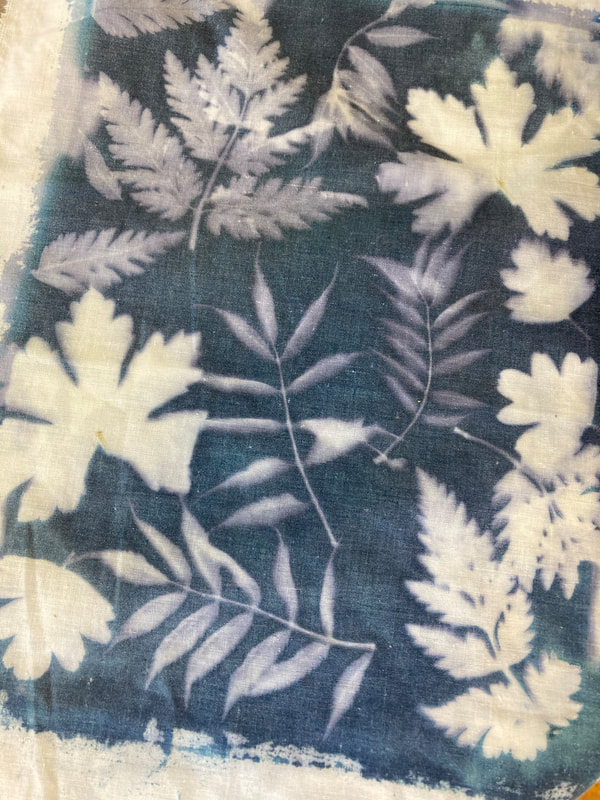
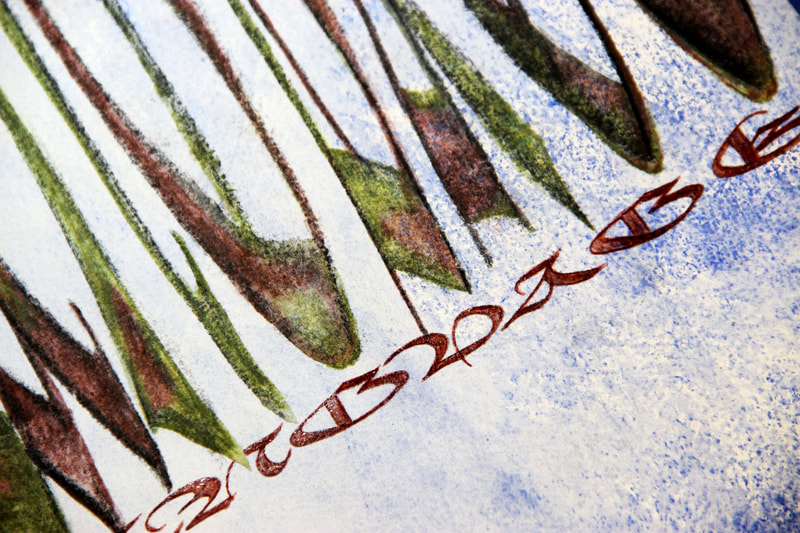
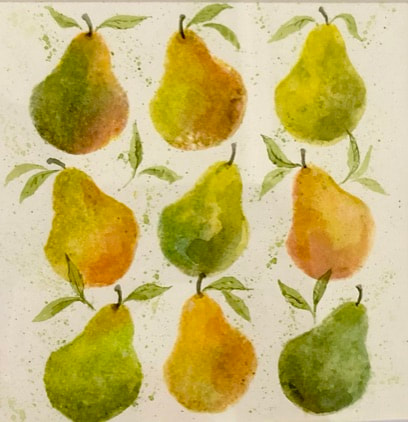
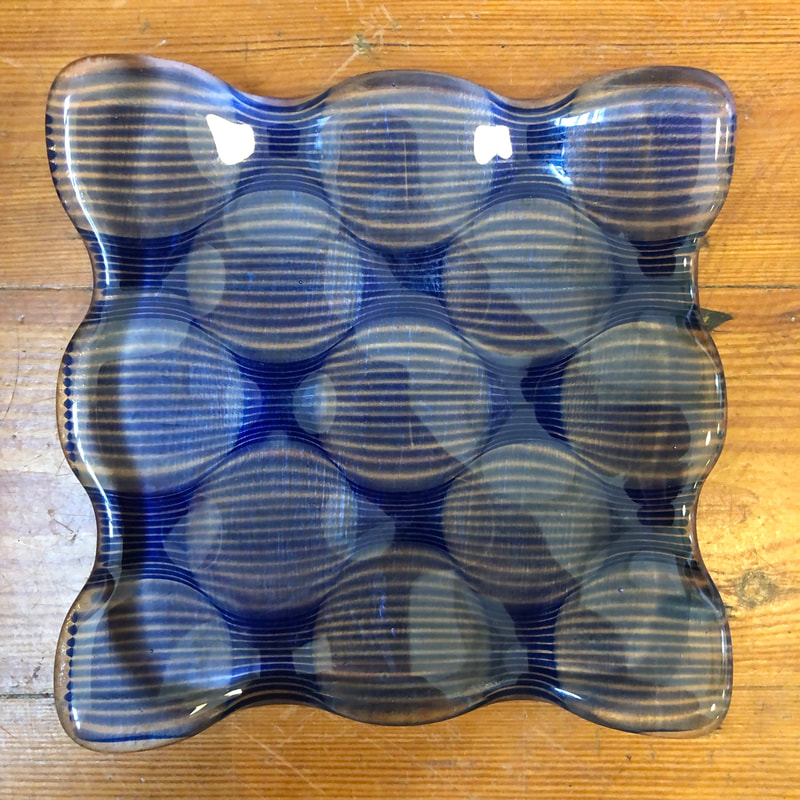

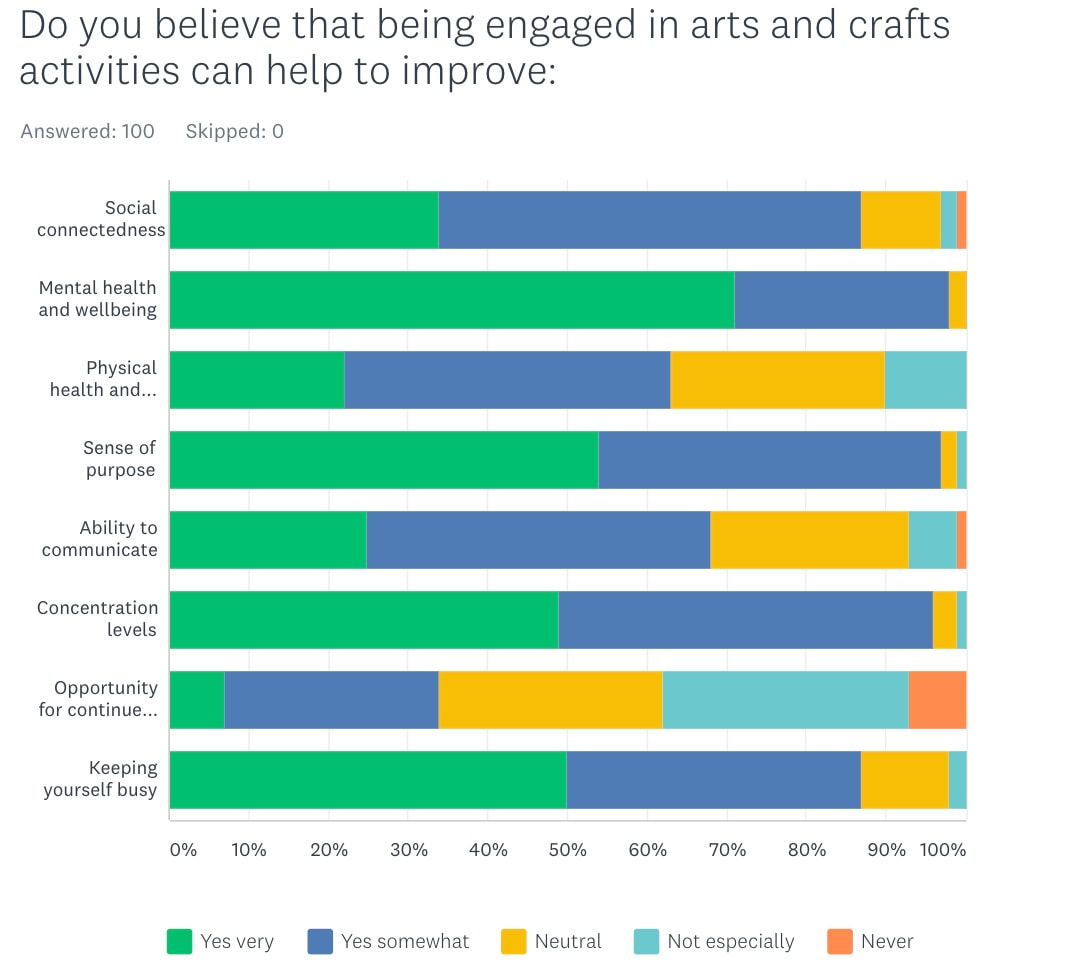
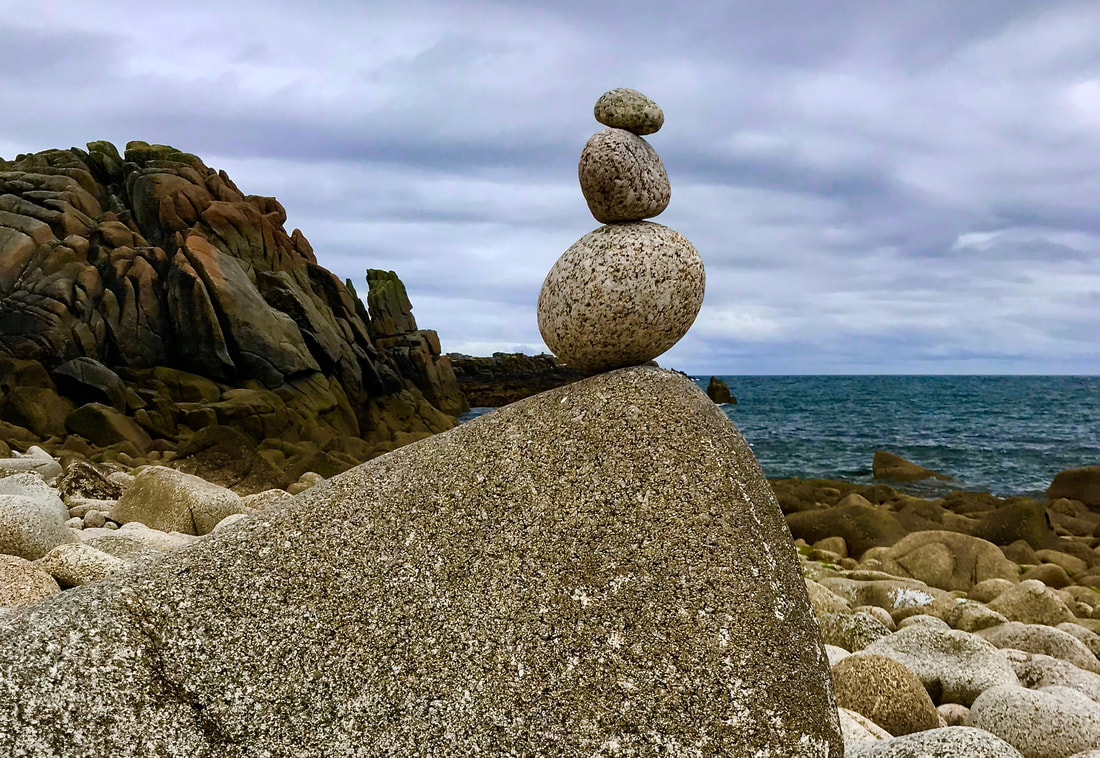
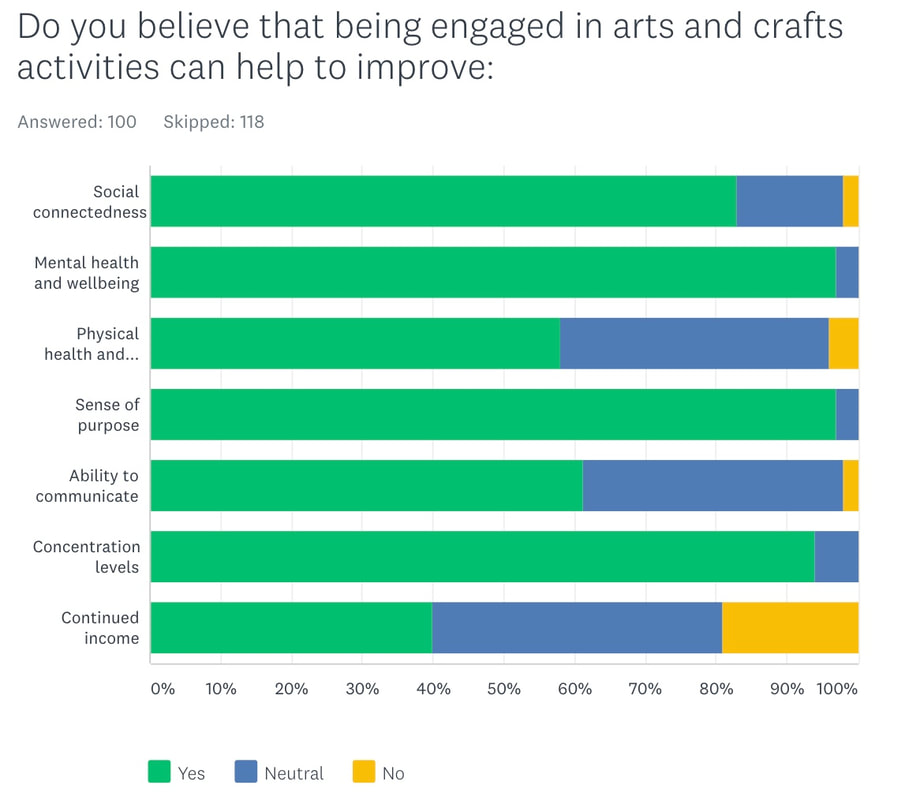
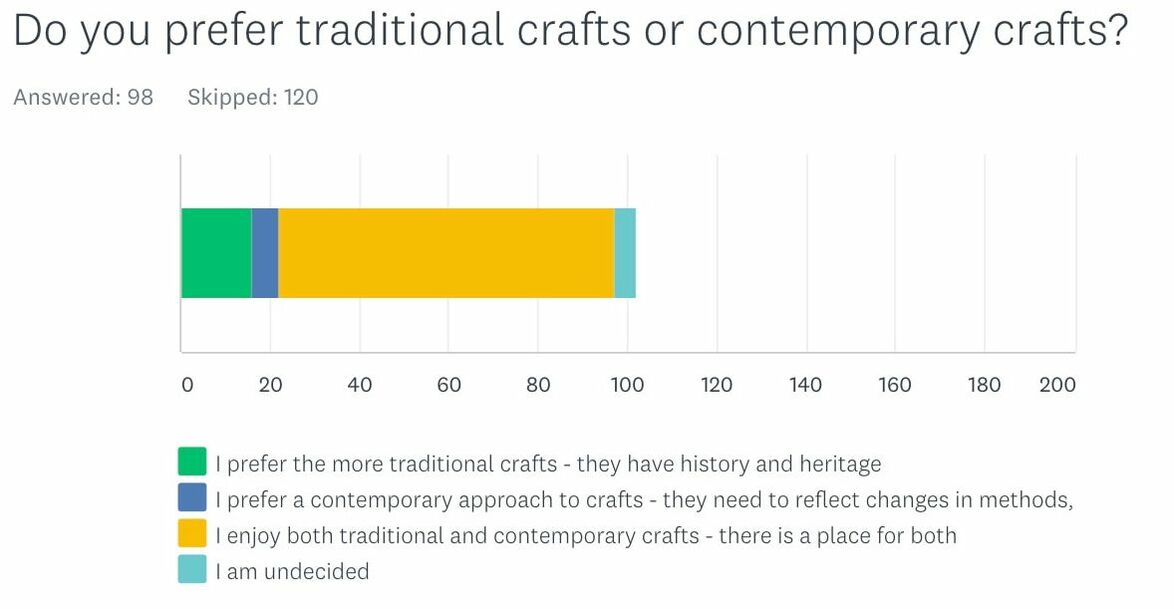
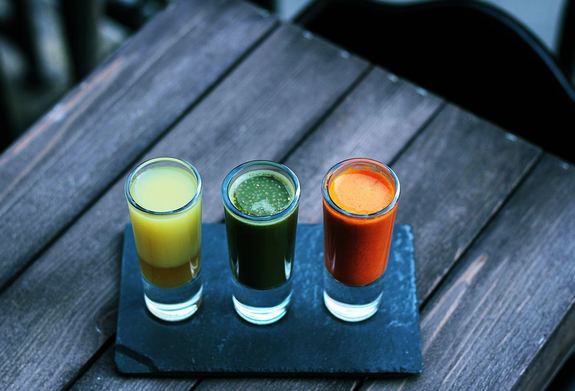
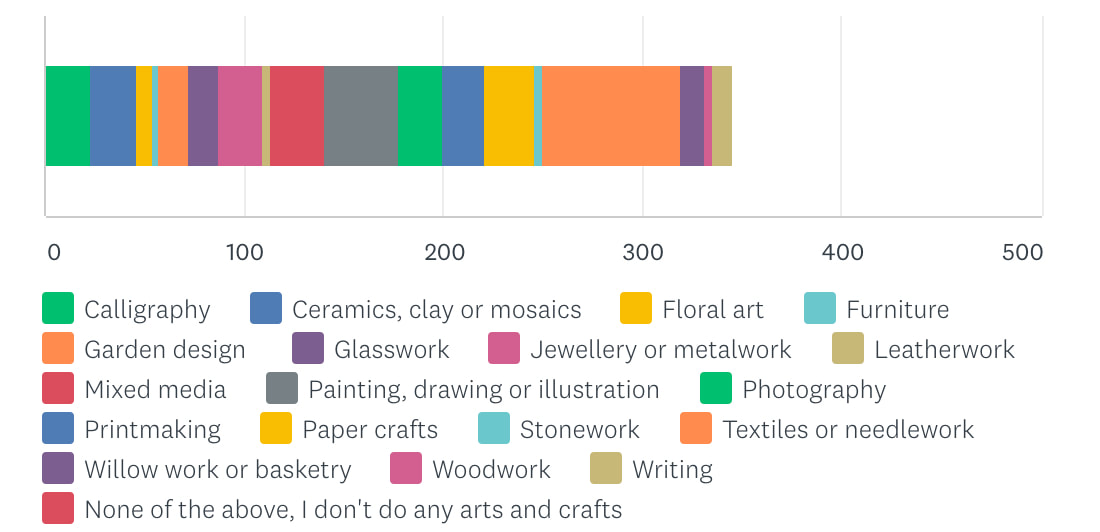
 RSS Feed
RSS Feed